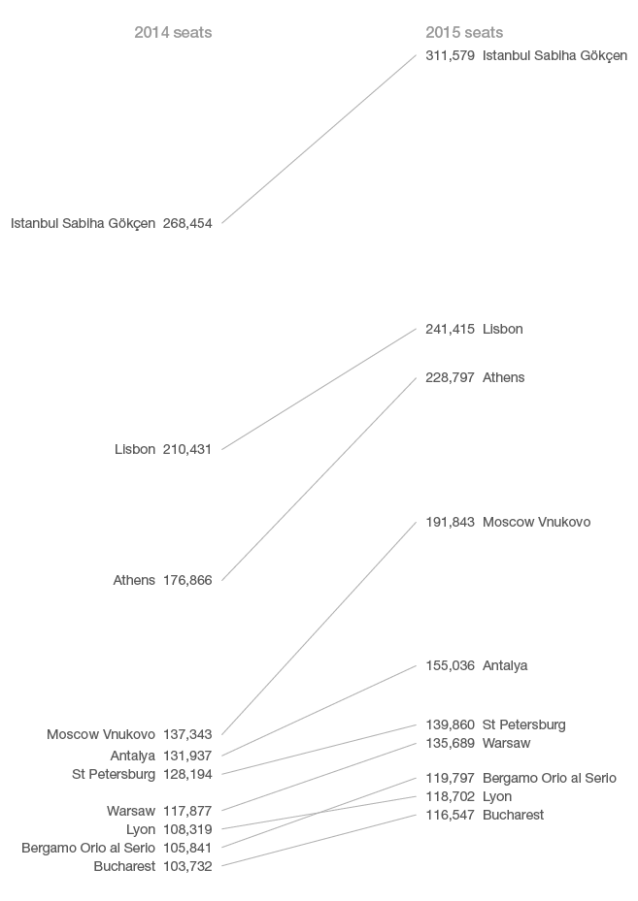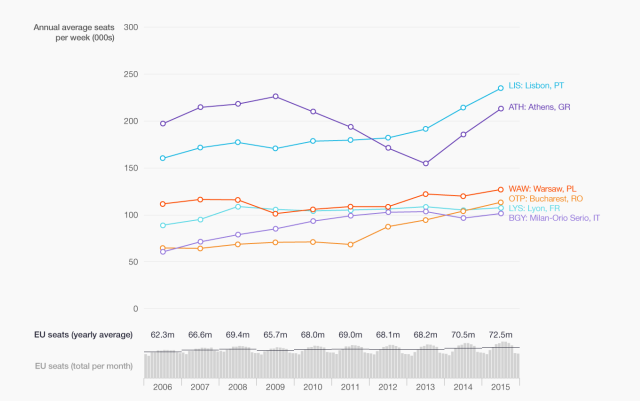April data from Flightglobal’s schedules specialist Innovata shows a number of EU airports, in particular Greek capital Athens, making up lost ground from the recession as airlines lift their capacity
While sharp increases in capacity have been the recent norm for many airports in Turkey and Russia, data from Flightglobal’s schedules specialist Innovata shows some different names amid the fastest-growing airports this month.
Six of the 10 European airports with the largest increases in weekly seat capacity are from within the EU. Alongside growth leader Athens, there were double-digit increases in capacity at Lisbon, Warsaw, Bergamo and Bucharest airports in April, compared with the same month last year.
FASTEST GROWING EUROPEAN AIRPORTS APRIL 2015

Source: Innovata, based on one week of schedule data (April 2014 v 2015) for airports with a minimum of 100,000 weekly departing seats
The likes of Lyon, Rome Fiumicino, Bucharest, Madrid and London Luton airports all had airlines lifting capacity by more than 8% over the same month in 2014.
Of these airports, Athens has experienced the most dramatic changes over the last decade. Airlines, driven both by Ryanair’s Greek expansion and Aegean’s growth after its consolidation of local rival Olympic Air, increased seat capacity by almost 30% in April. It followed a similar jump in 2014. But that came after five years of airline capacity cuts at the airport, Innovata figures show. Airline capacity at Athens is still short of April 2009.
Innovata data across EU airports for April shows that while airlines have increased capacity over the last two years, the growth rate is lower than of before the financial crisis. But despite the uneven growth trajectory, European airlines are collectively providing significantly more seat capacity from EU airports than a decade ago.
TEN YEAR GROWTH TREND FOR SELECTED EU AIRPORTS

Source: Innovata
Perhaps one of the most interesting trends that is evident is the extent to which capacity differs between the peak summer months and the traditionally difficult winter season. This has increased each year over the last decade.
Much of that increase in seasonality reflects the growth of the low-cost carriers, which with their non-hub models have greater flexibility to shift capacity around airports. They have also, most notably Ryanair, shown a willingness to ground aircraft over the toughest winter months rather than fly them on unprofitable routes.
Source: Cirium Dashboard



















